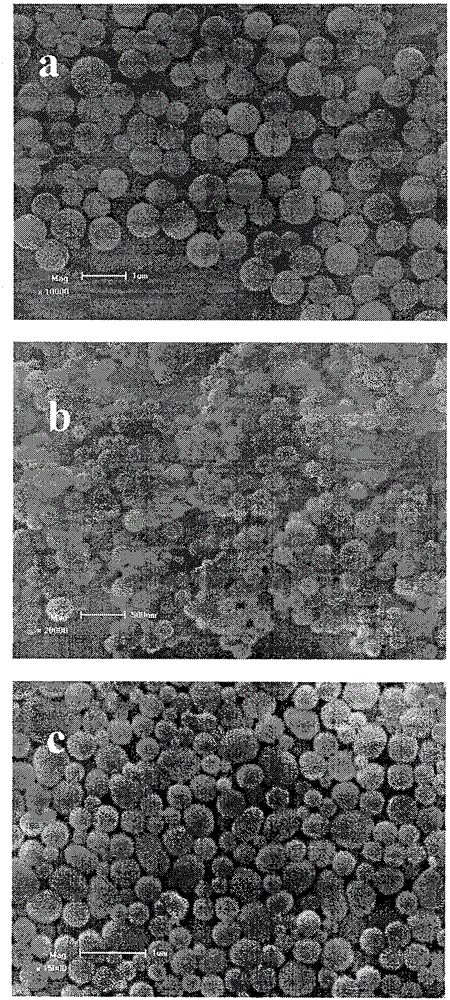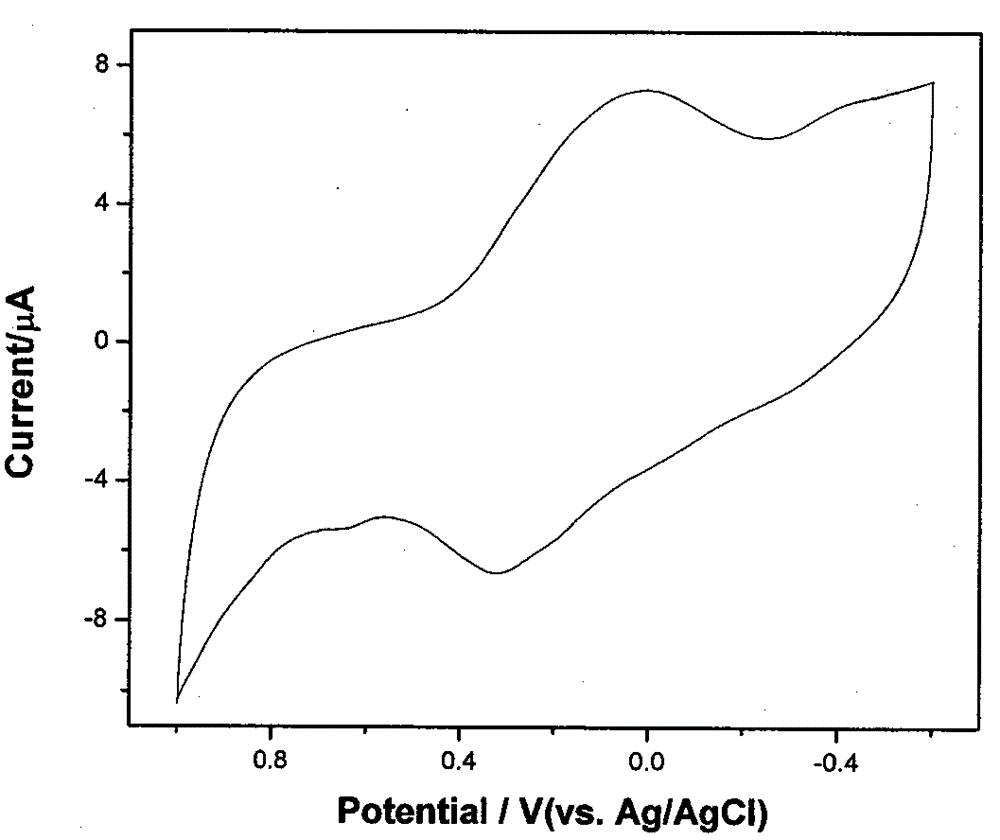Redox active polyhydroquinone microspheres and preparation method thereof
A polyhydroquinone and microsphere technology, applied in the field of functional materials, can solve the problems of unstable product performance, difficult processing, insoluble and infusible, etc.
- Summary
- Abstract
- Description
- Claims
- Application Information
AI Technical Summary
Problems solved by technology
Method used
Image
Examples
Embodiment 1
[0017] Add 1.65g of hydroquinone, 15.0mL of 4.4% PEG1000 aqueous solution and 125.6mL of water into the reaction flask, mix well and add 6.0mL of 0.02% ferrous sulfate aqueous solution and 3.4mL of hydrogen peroxide; After reacting for 24 hours, a black polymer microsphere dispersion was obtained, and the microspheres were separated by centrifugation, and dried in vacuum at 50° C. for 24 hours. The obtained polyhydroquinone microspheres had a particle diameter of 1020 nm. Taking silver / silver chloride as a reference electrode, the reduction peak potential of the microsphere dimethyl sulfoxide dispersion casting film is 0.12 volts, and the oxidation peak potential is 0.34 volts.
Embodiment 2
[0019] Add 1.65g of hydroquinone, 15.0mL of 4.4% PEG1000 aqueous solution and 128.6mL of water into the reaction flask, mix well and add 3.0mL of 0.02% ferrous sulfate aqueous solution and 3.4mL of hydrogen peroxide; After reacting for 24 hours, a black polymer microsphere dispersion was obtained, and the microspheres were separated by centrifugation, and dried in vacuum at 50° C. for 24 hours. The obtained polyhydroquinone microspheres had a particle diameter of 860 nm. Taking silver / silver chloride as a reference electrode, the reduction peak potential of the microsphere dimethyl sulfoxide dispersion casting film is 0.21 volts, and the oxidation peak potential is 0.57 volts.
Embodiment 3
[0021] Add 1.65g of hydroquinone, 30.0mL of 4.4% PEG1000 aqueous solution and 110.6mL of water into the reaction flask, mix well and add 6.0mL of 0.02% ferrous sulfate aqueous solution and 3.4mL of hydrogen peroxide; After reacting for 24 hours, a black polymer microsphere dispersion was obtained, and the microspheres were separated by centrifugation, and dried in vacuum at 50° C. for 24 hours. The obtained polyhydroquinone microspheres had a particle diameter of 680 nm. Taking silver / silver chloride as a reference electrode, the reduction peak potential of the microsphere dimethyl sulfoxide dispersion casting film is 0.10 volts, and the oxidation peak potential is 0.32 volts.
PUM
| Property | Measurement | Unit |
|---|---|---|
| particle diameter | aaaaa | aaaaa |
| particle diameter | aaaaa | aaaaa |
| particle diameter | aaaaa | aaaaa |
Abstract
Description
Claims
Application Information
 Login to View More
Login to View More - R&D
- Intellectual Property
- Life Sciences
- Materials
- Tech Scout
- Unparalleled Data Quality
- Higher Quality Content
- 60% Fewer Hallucinations
Browse by: Latest US Patents, China's latest patents, Technical Efficacy Thesaurus, Application Domain, Technology Topic, Popular Technical Reports.
© 2025 PatSnap. All rights reserved.Legal|Privacy policy|Modern Slavery Act Transparency Statement|Sitemap|About US| Contact US: help@patsnap.com


